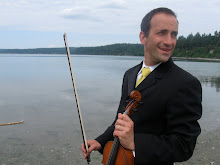Wednesday, March 21, 2012
Portrait of The Artist As a 9 year old

For well more than a decade before March 21, 2003, the name William Dedalus Dolde felt like the name of a boy who seek to be with us some day. The inspiration for this name, of course, comes from James Joyce. Although Stephen Dedalus is one of three main characters in Ulysses, before all that 1922 shake-up literature (Woolf's Mrs. Dalloway and Eliot's The Waste Land also come out this year), Dedalus stands before us as the main character in Portrait of the Artist as a Young Man. I can still picture this book on my parents' bookshelf in Connecticut and can recall, as my interest in literature waxed in my early teens, being struck by the apparent oddness and dryness of Joyce's title. The name Joyce meant nothing to me then. I wasn't sure if this book was fiction or non-fiction.
Even though I took no less than 3 undergraduate or graduate courses just on Joyce, wrote a senior essay on Joyce, and studied Ulysses elsewhere, I realize that my dances with Portrait have been brief. In a Joyce class the book tends to make a tediously brief appearance as an intermezzo or explanation for earlier works (the classic story, "The Dead," which receives due credit for its form) and what many considered the most important novel of the 20th century, or ever, Ulysses. Not much happens in Portrait. That would be fine, and the long middle section in which Stephen Dedalus listens to a vivid description of the torments of Hell during a Catholic retreat has a certain fire, but still, I realize I never really dove into this book. Sure, there are classic lines everybody and his Uncle remembers: "I go forth to forge in the smithy of my soul the uncreated conscience of my race" and the bit about how the true artist erases himself from the work of art and stands behind or apart from it, paring his fingernails (these words taken as Joyce's own take on art, and taken as a foundation for a number of 20th century approaches to literary interpretation). But people (meaning me) don't remember the vivid parties or car crashes of Gatsby or doom of Robert Jordan if For Whom the Bell Tolls or incorrigible lawyers or politicians in anything by Dickens.
It was therefore exciting to listen to Portrait on audio last weekend after a 20 year absence from the book. I clearly had not read it since traveling to Ireland myself in 1994 and 2004--the Dublin streets Stephen wanders are much more tangible and alive to me now that I have walked Grafton Street myself. And then--and then!--the book concludes with entries from Stephen's diary (where we quotes about Smithy of the Soul and the like)--and! the diary section begins on March 20. Could it be, I wonder, that Stephen Dedalus scribes some of Joyce's most-quoted lines on March 21, the birthday of Liam Dedalus Dolde? What serendipity! How odd that in the 9 years of Liam's time with us I had not dipped into this text to see his name (though in truth, it was the melody of the name William Dedalus Dolde, and the possibility of a college-aged Liam calling on either the Joycean or Greek father of art as he wore a black mock-turtleneck and drummed and recited beat poetry [which he sort of does now minus the mock-turtleneck], rather than the Joycean character as ideal that had made the name seem so obvious)! No. Although March 21 does have a diary entry, the remarks there are not the oft-quoted ones. I think you have to wait until April 4 to hear Stephen tell us "Away, away!" and "Old Father, old Artificer, Stand me now and ever in good stead."
In any event, it did bring pleasant chills to have March 21 almost be the pivotal date in a novel that in part is responsible for Liam's moniker.
Although he is not going forth to Trieste or Paris tomorrow, our Liam Dedalus looks forward to a family birthday celebration of journeys off an island to a mainland, exotic locales (Family Fun Center, the Monte Carlo or Tunisia of the Seattle Area), and exotic cuisine (Blue C Sushi, the rotating sushi belt).
In the picture of child development that informs Waldorf Education, we learn that around the age of 9, a child goes through a mini-adolescence, a preview of teen rebellion--that, even, it is desirable that this mini-rebellion take place, else the suppressed forces seeking transformation will break forth will all the random and potentially destructive force in the teen years. Despite his drumming and interest in West Side Story and the Faust myth (we are going to see Damn Yankees in a couple of months), Liam seems fairly even-tempered at present. I note with particular interest his increasing comfort with competitive games and not necessarily needing to win (something his brother has not moved through yet); Liam is quite fond of an imaginative game involving heroes battling goblins he just received, and he has found a number of ways to make the game cooperative and inclusive so that his younger brother will play with contentment (and, of course, Liam can continue to play). Hopefully Liam's mini-adolescence can time itself on a visit to a grandparent in Virginia or Connecticut or Indiana. We have to keep his grandparents active and provide stimulus for them to think about.
Location:Maxwelton Rd,Clinton,United States
Subscribe to:
Posts (Atom)


